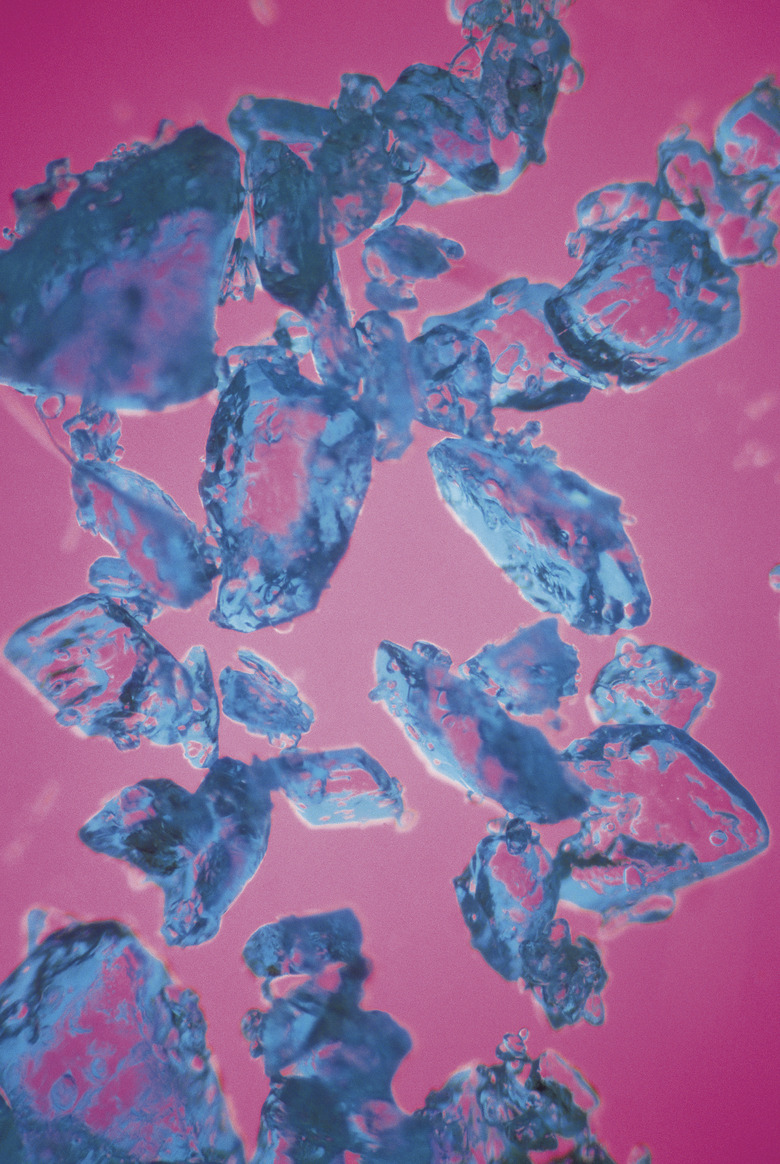How To Make A Supersaturated Solution Of Copper-Sulfate
A supersaturated solution contains more of the solute than could normally dissolve in solution. You can create this type of solution by adding solute to heated water, which allows the solution to hold more than normal. As this supersaturated solution cools, the excess solute will remain dissolved until a disturbance, such as the addition of more solute. You can create a supersaturated solution of copper(II) sulfate in this way.
Step 1
Put on your rubber gloves and safety goggles.
Step 2
Fill the beaker with distilled water. Leave some room at the top so that the solution will not overflow during stirring.
Step 3
Heat the beaker of water on the hot plate. Any increase in temperature will increase the amount of copper(II) sulfate you can add to the solution. At 100 degrees Celsius, the solubility of copper(II) sulfate is 736 grams per kilogram of water. You needn't heat the water this much; anywhere near the boiling point will be sufficient.
Step 4
Monitor the temperature of the water with the thermometer. Stop heating the water once it nears the boiling point of 100 degrees Celsius.
Step 5
Add copper(II) sulfate and stir until the heated solution is saturated. When the solution is saturated, copper(II) sulfate will not dissolve anymore.
Step 6
Let the solution cool. Once the solution has cooled, it will be a supersaturated copper(II) sulfate solution. Make sure that no particles get into the solution while it cools, which could trigger precipitation of the excess copper(II) sulfate.
Step 7
Add solid copper(II) sulfate to the supersaturated solution or let the solution evaporate if you wish to trigger crystallization.
Things Needed
- Copper(II) sulfate
- Beaker
- Stirring rod
- Thermometer
- Hot plate
- Rubber gloves
- Safety goggles
- Beaker tongs
Warning
Copper(II) sulfate can irritate the eyes and skin, and can be harmful if ingested. Use care when handling it.
Use caution around the hot plate and heated beaker. Handle the beaker with beaker tongs if you need to move it.
Cite This Article
MLA
Murmson, Serm. "How To Make A Supersaturated Solution Of Copper-Sulfate" sciencing.com, https://www.sciencing.com/make-supersaturated-solution-coppersulfate-12642/. 24 April 2017.
APA
Murmson, Serm. (2017, April 24). How To Make A Supersaturated Solution Of Copper-Sulfate. sciencing.com. Retrieved from https://www.sciencing.com/make-supersaturated-solution-coppersulfate-12642/
Chicago
Murmson, Serm. How To Make A Supersaturated Solution Of Copper-Sulfate last modified March 24, 2022. https://www.sciencing.com/make-supersaturated-solution-coppersulfate-12642/
